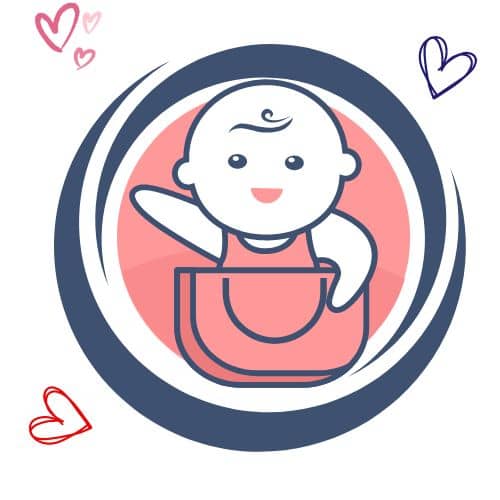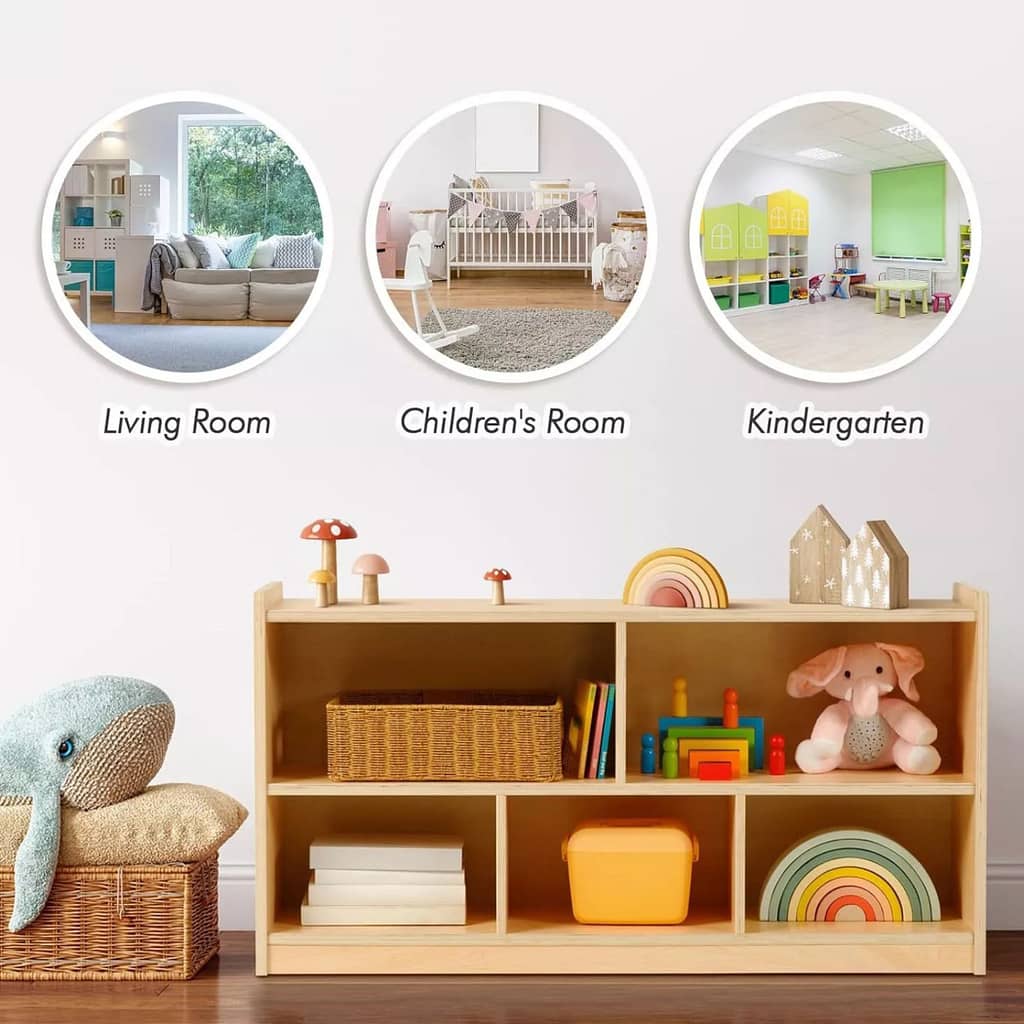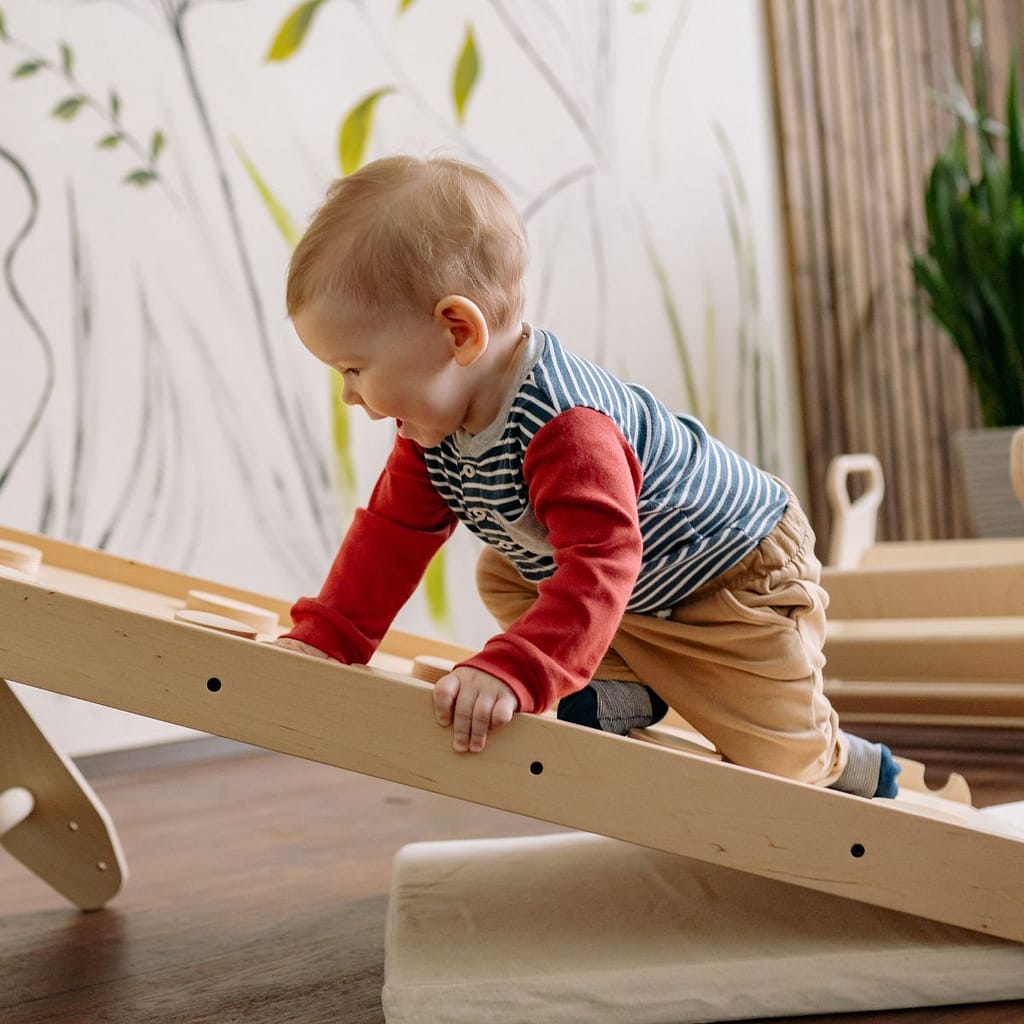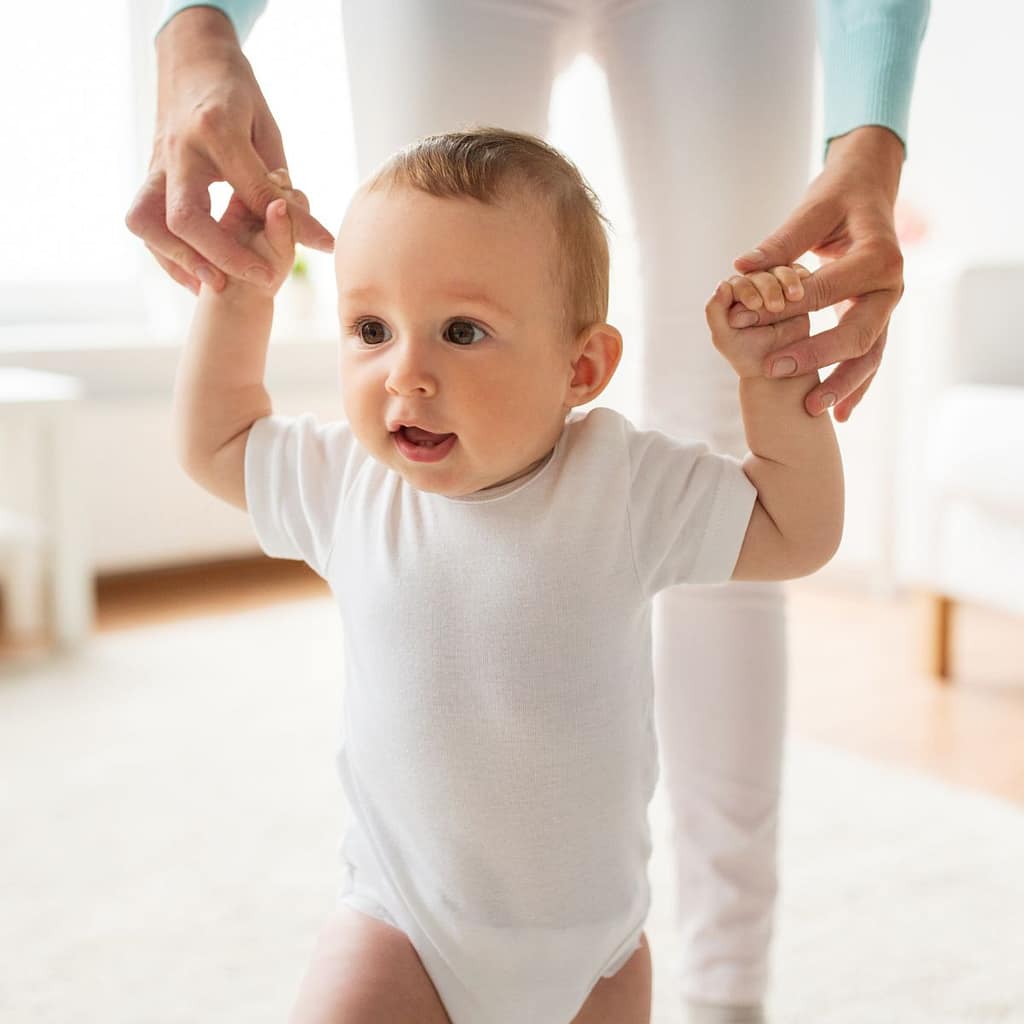Watching your baby take their first steps is one of the most breathtaking and emotional moments of parenthood. Those tiny, wobbly movements symbolize much more than just mobility—it’s a huge leap in your baby’s physical development and a memory you’ll cherish forever.
In this blog, I’ll walk you through everything you need to know to encourage baby’s first steps confidently. I’ll also share tips and must-have baby essentials that help along the way, while weaving in important insights about infant developmental stages, baby sensory development, and motor skills development. Let’s get your little one moving, shall we?

Understanding Baby Milestones by Month: How Baby’s First Steps Fit In
To kick things off, it’s super important to know where baby’s first steps land in the big picture of baby milestones by month.
Most babies start walking between 9–15 months, but trust me, every baby’s timeline is unique. First, they master sitting up, then crawling, cruising along furniture, and finally—those magical first solo steps.
Here’s what I’ve learned along the way:
- Baby sensory development kicks in big time when babies explore textures and surfaces underfoot.
- Motor skills development sharpens with each pull-up, squat, and stumble.
- Infant developmental stages aren’t just physical—they also involve cognitive bravery. Baby has to want to let go!
Tips to keep in mind:
- Look for steady cruising along the sofa (a sure sign that steps are near).
- Encourage barefoot play at home; it strengthens foot muscles naturally.
- Celebrate the little wins—like when your baby stands without holding onto anything!
You’re not just cheering them on—you’re setting the foundation for confident, independent movement.

Essential Baby Gear to Support Physical Development in Babies
Moving along, let’s talk about some baby essentials that seriously help make those first steps smoother (and safer).
When it comes to physical development in babies, providing the right environment and tools is key. You don’t need fancy equipment—just smart choices:
- Push Toys: Sturdy baby walkers that don’t tip easily give babies the perfect support to practice balance.
- Soft Play Mats: A must-have for safe landings. Our Abbys Nest Baby Play Mat from amazon is perfect for this stage—cushiony, non-toxic, and stylish!
- Grip Socks or Bare Feet: Allow babies to feel the floor beneath them, helping with their baby sensory development.
Pro Mom Tip: Make sure the area is clutter-free and baby-proofed. Trust me, a stubbed toe on a coffee table leg can ruin the mood fast.
Giving babies the right tools boosts their motor skills development without forcing the process. We’re here to empower, not rush them.

How to Encourage Motor Skills Development in Babies
Now that you’ve set up the right environment, it’s go-time! But first, let’s ease into this:
Supporting your baby’s motor skills development is about providing lots of opportunities to practice while keeping it fun.
Here’s what worked like magic for me:
- Play games like “Come to Mama!” sitting a few steps away.
- Model walking: Babies are crazy observant. Seeing you walk encourages imitation.
- Use furniture: Encourage cruising along the couch or a low table.
Remember, your baby’s first steps are part of a complex web of baby sensory development too. Every texture they touch, every wobbly balance moment, builds the confidence needed to move independently.
Little encouragements matter big time. Whether it’s a proud clap or an excited “You did it!”—your joy becomes their fuel.
Creating a Sensory-Rich Environment for Baby’s First Steps
Before we wrap it up, here’s the deal: Baby’s first steps aren’t just about strong legs—they’re about strong senses too.
By creating a sensory-rich environment, you make walking more exciting and intuitive:
- Textures: Walk barefoot on different surfaces—carpet, grass, even a soft blanket. It’s all great for baby sensory development.
- Sounds: Play gentle music. Babies love to bounce and sway naturally, promoting balance.
- Visuals: Scatter colorful toys a few steps apart to encourage reaching and movement.
You’re helping your baby conquer an incredible phase in their infant developmental stages, one sensory experience at a time.
Seriously, this is where the magic happens!
Final Thoughts: Cherishing Baby’s Developmental Stages
If there’s one thing I want you to remember, it’s this: baby’s first steps are more about the journey than the destination. Every tumble, every determined push to stand again, every giggle—it’s pure gold.
Celebrate your baby’s baby milestones by month, honor their pace, and keep nurturing their physical development with love, patience, and the right baby essentials.
Walking is just the beginning of a lifetime of exploration. 💛
💛 P.S. If you’re looking for a few more ideas that really helped me (and so many parents), you might love this next read: 10 Fun Activities to Strengthen Your Baby’s Walking Skills. It’s packed with gentle, easy ways to build confidence and movement—plus a few simple baby essentials for newborns that make practicing even more fun. No pressure at all, just thought I’d share in case it’s helpful! 🌼









